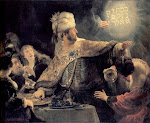 | ||||||
| my body knows unheard of songs - Cixous |
Cixous' statement reminds me of Terence McKenna's observation that "there are Niagras of beauty within the body" - a statement that continues to astonish me today. But why does a culture seek to repress and put down the body? George Orwell offers a possible answer in 1984 when describing Julia's understanding of politics: "... sexual privation induced hysteria, which was desirable because it could be transformed into war fever and leader worship."
Graffiti today may or may not identify with Punk music, but the off-kilter "U" in this arrangement of the word PUNK is suggestive of movement, potential toppling - kind of like the Vepco hydro plant here.
Inside, about 12' above the floor, this message suggests some knowledge of Guy Debord's 1967 work Society of the Spectacle. Among the shorter definitions Debord provides for spectacle is: "The spectacle is not a collection of images, but a social relation among people, mediated by images."
But this spectacle doesn't seem especially menacing, certainly not worth destroying, so let me try another of his definitions: "The spectacle presents itself as something enormously positive, indisputable and inaccessible. It says nothing more than 'that which appears is good, that which is good appears.' The attitude which it demands in principle is passive acceptance which in fact it already obtained by its manner of appearing without reply, by its monopoly of appearance."
What is that indisputable good? Consumerism? Corporatism? Militarism?
The paint on these stencils was so fresh I could smell it and the combination of these images arranged on the back of the Vepco transformer building struck me as a kind of triptych of political relevance.
 The "one man army" stares out at us with serious determination while making a clever play on the
The "one man army" stares out at us with serious determination while making a clever play on theUS Army recruitment motto "Army of One."
Who is this anti-war soldier?
A revolutionary from the past?
A revolutionary from the future?
Here, the serious challenge of abandoning militarism is sweetened with a bit of humor about a holiday that involves surrender of pleasurable practices. The humor is effective in disarming the reader while the connection of war and lent suggests a clever subtext acknowledging the blood lust of warfare - a war lust that is often fueled by misinformation.

The most complex stencil of the trio, the Buddha image reaffirms the message of peace and balances the intensity of the young revolutionary's gaze. The Buddha emanates energy and gestures in peace, but not passive acceptance of militarism.
Some may dismiss these rebel painters as merely destructive delinquents, but their anti-war message is in line with the warnings President Eisenhower gave Americans 50 years ago when he left office, to beware of the military-industrial complex and its cancerous impact on Democracy.






This graffiti caught my attention, and has significant meaning. The artist was very clever in delivering his message. The first part of the triptych, "army of one" shows how this artist is not conforming and is clearly against war, a soldier for his own cause and his own message which he is trying to portray. The next image of the sign with "give up war for lent" is my favorite one because it is very clever and intriguing. It shows that maybe we should look at ourselves and consider how violence affects our nation as well as others, and how war is not the best solution necessarily. Also the image could represent "religious" people who accept unnecessary violence while calling themselves moral people, and should "give up" what they love (war).
ReplyDelete